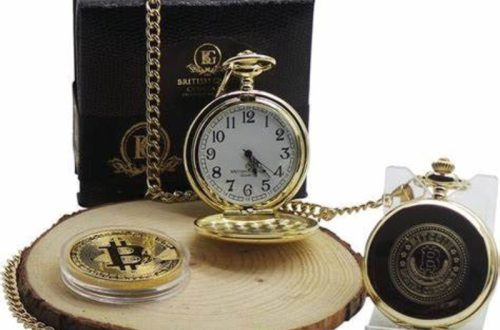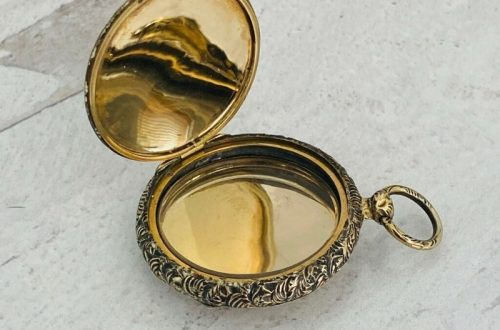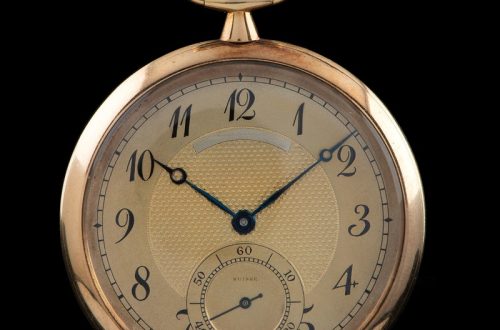Part 1: The Early Beginnings
Watches have been a symbol of elegance and sophistication for centuries, and their history is a fascinating one. The earliest form of a wristwatch dates back to the 16th century when they were worn by men as decorative pieces. These early timepieces were not very accurate, and it wasn’t until the 19th century that wristwatches became more practical and reliable.
1. The Origin of the Wristwatch:
It is believed that the first wristwatch was created in the late 1500s by Robert Dudley, an English nobleman and explorer. He is said to have worn a watch on his wrist, which was considered unusual at the time as pocket watches were more common. However, it wasn’t until the 19th century that wristwatches gained popularity, particularly among military men who found them more convenient than pocket watches.
2. The Evolution of Technology:
The advancement of technology played a pivotal role in the evolution of wristwatches. In the 19th century, the invention of the stem-winding mechanism and the lever escapement significantly improved the accuracy and reliability of timepieces. These innovations made watches more practical and appealing to a wider audience.
The stem-winding mechanism allowed users to manually wind the watch, ensuring a consistent power supply and maintaining accurate timekeeping. The lever escapement, a mechanical device that regulates the movement of the watch’s hands, also contributed to improved accuracy. These technological advancements paved the way for the development of smaller and more elegant wristwatches that were no longer seen as just a practical tool but also as a fashionable accessory.
The combination of improved accuracy and enhanced aesthetics made wristwatches more desirable and accessible to a wider range of people. As a result, wristwatches became increasingly popular throughout the 20th century, evolving from utilitarian devices to fashionable accessories.

Part 2: The Rise of Popular Wristwatches
The 20th century saw the rise of wristwatches as iconic fashion statements, with many well-known brands emerging and setting the standard for elegant timepieces. This era also saw the birth of several significant innovations that would change the industry forever.
1. The Rise of Iconic Brands: Luxury and Elegance
The 20th century witnessed the birth of several iconic watch brands that have become synonymous with luxury, elegance, and precision. Rolex, Omega, and Patek Philippe are just a few examples of brands that emerged during this time and continue to dominate the industry today.
These brands established the standard for quality and design, creating timepieces that collectors and enthusiasts highly seek after. Their watches are often made from precious metals, adorned with exquisite gemstones, and equipped with intricate mechanical movements. The attention to detail and craftsmanship that goes into creating these timepieces is unparalleled. The influence of these iconic brands can still be seen in the industry today. Their designs and innovations have inspired countless other watchmakers, shaping the evolution of the watchmaking industry.
2. Significant Innovations: Shaping the Industry
The 20th century also saw several significant innovations in the watchmaking industry that had a profound impact on the development of timepieces. One of the most important innovations was the invention of the quartz movement in the 1960s. This revolutionary technology replaced mechanical movements, making watches more accurate and affordable.
The quartz movement led to the creation of digital watches, which became popular in the 1970s. These watches featured electronic displays that showed the time in digital format, offering a more modern and convenient alternative to traditional mechanical watches.

Despite the rise of digital technology, traditional mechanical watches continued to be valued for their craftsmanship and intricate design. Many people still appreciate the beauty and complexity of mechanical movements, and these watches have remained popular among collectors and enthusiasts. The innovations of the 20th century laid the foundation for the watchmaking industry as we know it today. The combination of iconic brands, technological advancements, and enduring craftsmanship has ensured the continued popularity and relevance of watches in the modern world.
Part 3: The Wristwatch in Popular Culture
Wristwatches have not only been a symbol of elegance but have also played a significant role in popular culture. From being featured in movies and television shows to being worn by iconic figures, wristwatches have left their mark on the world of entertainment.
1. Wristwatches in Film and Television: Iconic Timepieces
Wristwatches have played a significant role in popular culture, appearing prominently in numerous iconic films and television shows. From the classic James Bond films featuring the Rolex Submariner to Marty McFly’s futuristic Casio in “Back to the Future,” watches have become an essential part of the characters’ identities.
These timepieces often serve as more than just accessories; they can symbolize sophistication, wealth, and status. The choice of watch can reveal a character’s personality, profession, and social standing. Watches have been used to convey messages, mark significant moments, and even drive the plot forward.
The iconic status of certain watches has been solidified through their appearances in popular culture. The Rolex Submariner, for example, has become synonymous with luxury and adventure, thanks to its association with James Bond. These timepieces have transcended their original purpose as mere timekeeping devices, becoming cultural symbols and coveted collectibles.

2. Wristwatches as a Symbol of Status: A Timeless Tradition
Throughout history, wristwatches have been associated with wealth and status. They have been worn by royalty, celebrities, and influential figures. This has cemented their reputation as a symbol of elegance and sophistication. Many often view owning a luxury wristwatch as a sign of success and achievement.
Today, luxury wristwatches continue to be a status symbol. Collectors and enthusiasts are eager to own pieces from prestigious brands like Rolex, Patek Philippe, and Audemars Piguet. These watches are often considered investments, appreciating in value over time.
The association of wristwatches with status and prestige has been reinforced by their appearance in popular culture. Iconic characters wearing luxury watches have further solidified their reputation as symbols of wealth and success. As a result, many people continue to view wristwatches as a way to express their personal style and social standing.
Part 4: The Future of Wristwatches
As technology continues to advance and consumer preferences shift, the future of wristwatches is an exciting and dynamic landscape. With the rise of smartwatches and the increasing demand for sustainable and ethical practices, the industry is evolving to meet the needs of a new generation of watch enthusiasts.

1. The Rise of Smartwatches: A New Era of Timekeeping
The 21st century has witnessed the emergence of a new category of timepieces: smartwatches. These technologically advanced devices combine the functionality of a traditional watch with the features of a smartphone. Smartwatches offer a range of features, including fitness tracking, notifications, and even the ability to make payments.
While traditional wristwatches continue to hold their appeal, smartwatches are particularly popular among younger generations who value functionality and connectivity. The ability to track fitness goals, receive notifications, and control smart home devices has made smartwatches a desirable accessory for many. The popularity of smartwatches has led to increased innovation and competition within the watch industry. Watchmakers are constantly striving to develop new features and improve the design and functionality of their smartwatches.
2. Embracing Sustainability and Ethical Practices: A Focus on Responsibility

In response to growing concerns about environmental impact and ethical sourcing, many watchmakers are adopting more sustainable and ethical practices. This includes using recycled materials, reducing carbon emissions, and ensuring fair labor practices throughout the supply chain. As consumers become more conscious of the environmental and social implications of their purchases, the watch industry is adapting to meet these demands. Watchmakers are increasingly transparent about their sustainability initiatives, highlighting their efforts to reduce their environmental footprint and support ethical practices.
The trend towards sustainability and ethical practices is not only beneficial for the environment but also has a positive impact on the watch industry. By demonstrating their commitment to responsible business practices, watchmakers can build trust with consumers and enhance their brand reputation.
In conclusion, the history of the wristwatch is a rich and diverse one, filled with innovation, elegance, and cultural significance. From their early beginnings as decorative accessories to their current status as symbols of status and style, watches have stood the test of time. The future of wristwatches looks bright, with new technologies and ethical practices shaping the industry and appealing to a new generation of watch enthusiasts. No matter the changes and advancements that come, the timeless elegance of the wristwatch will continue to captivate and inspire for years to come.




